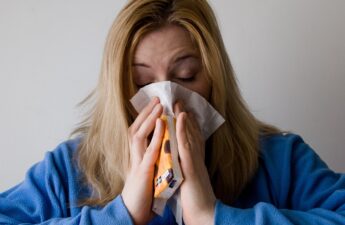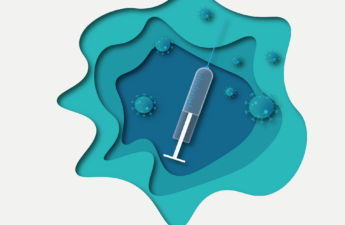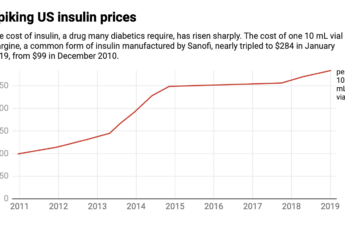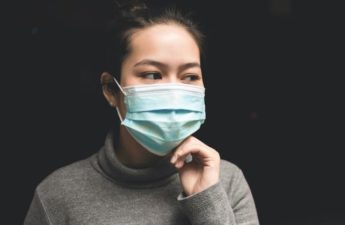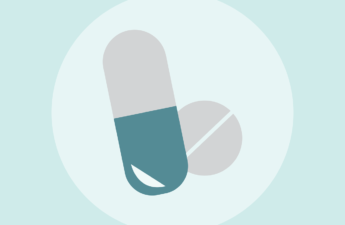There are certain changes people expect to experience when they get pregnant. Whether that’s unconventional food cravings, a “glowing” complexion or morning sickness. But some of the changes the body goes through during pregnancy can be a tad more unconventional.
How do you make a universal flu vaccine?
University of Washington School of Medicine microbiologist Deborah Fuller explains the challenges, and how mRNA could offer a promising solution
Texas Abortion Ruling Nears, But Blue States Aren’t Waiting to Protect Pill Access
A federal judge in Texas soon could make one of the two pills used in medication abortions harder to come by, even in blue states that support abortion rights. Officials and advocates in those states aren’t waiting for the judge to rule. They’re trying to ensure continued access to the drugs that a growing number of Americans are using to end their pregnancies at home.
Springing forward into daylight saving time is a step back for health – a neurologist explains the medical evidence, and why this shift is worse than the fall time change
Researchers are discovering that “springing ahead” each March is connected with serious negative health effects, including an uptick in heart attacks and teen sleep deprivation.
Sexual and reproductive telehealth services now available in Washington state.
Available telehealth services include birth control refills, pregnancy options counseling, emergency contraceptives, and screenings for sexually transmitted infections.
Struggling to Survive, the First Rural Hospitals Line Up for New Federal Lifeline
Facilities that convert to Rural Emergency Hospital status will get a 5% increase in Medicare payments as well as an average annual facility fee payment of about $3.2 million in exchange for giving up their expensive inpatient beds and focusing solely on emergency and outpatient care. Rural hospitals with no more than 50 beds that closed after the law passed on Dec. 27, 2020, are eligible to apply for the new payment model if they reopen.
Eli Lilly is cutting insulin prices and capping copays at $35 – 5 questions answered
High insulin prices have not earned any U.S. manufacturer many friends, with list prices increasing 54% from 2014 to 2019. Most troublingly, an estimated 1.3 million uninsured people with diabetes and patients with inadequate insurance have resorted to rationing their insulin. Skipping doses because of high insulin prices has sometimes had tragic and even deadly consequences.But growing competition has shaken up the insulin market in recent years.
Where are we at in King County with COVID-19?
A conversation with Seattle King County-Public Health’s Dr. Jeff Duchin, the county’s health officier and chief of Communicable Disease Epidemiology & Immunization Section.
Masking requirements in healthcare, long-term care, and correctional facilities to end April 3 in Washington state.
DOH infection prevention and control guidance continues to recommend masks for patients, healthcare providers, and visitors in healthcare settings. Licensed healthcare facilities are required to have infection prevention policies and programs consistent with CDC guidance.
Exercise is even more effective than counselling or medication for depression. But how much do you need?
We found the higher the intensity of exercise, the more beneficial it is. For example, walking at a brisk pace, instead of walking at usual pace. And exercising for six to 12 weeks has the greatest benefits, rather than shorter periods. Longer-term exercise is important for maintaining mental health improvements. When comparing the size of the benefits of exercise to other common treatments for mental health conditions from previous systematic reviews, our findings suggest exercise is around 1.5 times more effective than either medication or cognitive behaviour therapy.
Beware of Fraudulent Coronavirus Tests, Vaccines and Treatments—FDA warns
The FDA is particularly concerned that these deceptive and misleading products might cause people to delay, skip or stop appropriate medical treatment for COVID-19, leading to serious and life-threatening harm. It’s likely that the products do not do what they claim, and the ingredients in them could cause adverse effects (bad reactions) and could interact and potentially interfere with medications to treat many underlying medical conditions.
Surprise-Billing Law Loophole: When ‘Out of Network’ Doesn’t Quite Mean Out of Network
Referred to Swedish Maternal & Fetal Specialty Center – First Hill for pregnancy complications, Danielle Laskey, a registered nurse, was surprised with a $120,000 hospital bill.
80% of pregnancy-related deaths in Washington state were preventable, study
Behavioral health conditions, including suicide and overdose, remain the leading causes of pregnancy-related deaths. Other common causes were hemorrhage and infection.
One easy way to fight antibiotic resistance? Good hand hygiene
Hygiene and antibiotic use interact. Antibiotic use had less of an effect on the evolution of antibacterial resistance as hygiene levels increased. This is because evolution toward resistance depends on variation in bacterial sensitivity to antibiotics. By affecting the distribution of resistant and sensitive bacterial strains across patients, hygiene limits the bacterial diversity needed to evolve resistance.
Considering going off antidepressants? Here’s what to think about first
Stopping antidepressants abruptly, especially after a long period of use, will make most people – although not everyone – unwell. It’s impossible to tell in advance who will be affected, so slow dose reduction is advisable. Stopping antidepressants (or tapering down the dose) too rapidly can cause antidepressant discontinuation syndrome in around 20% of people.
